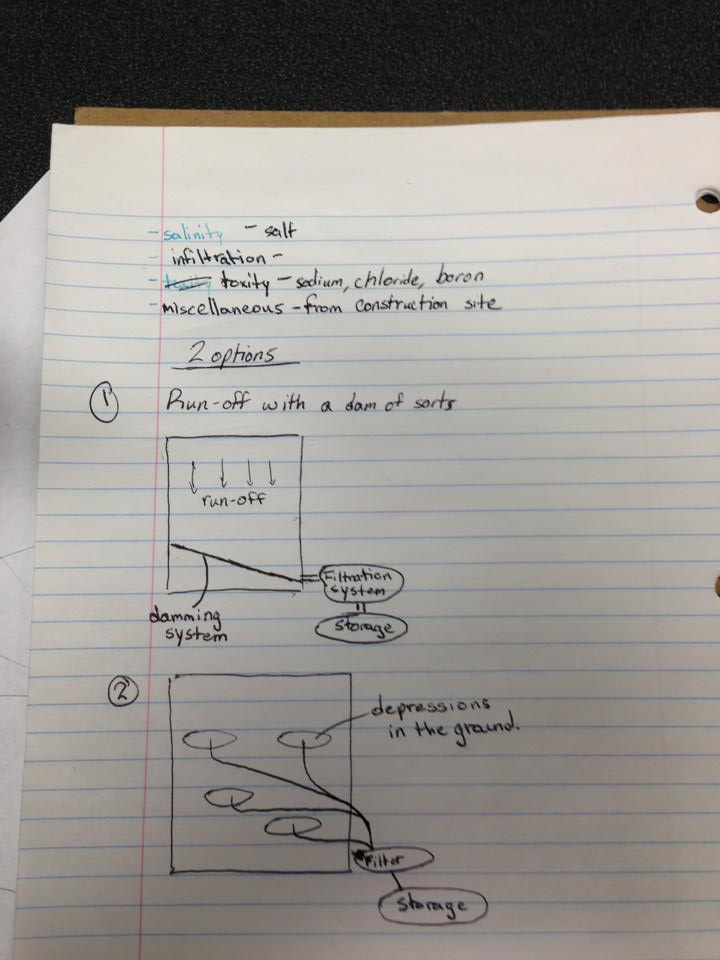Our project can be broken down into three major steps:
– Step 1: Analyze topography, geography and social context of the farm as well as its water need.
– Step 2: Research on different water catchment, filtration and storage methods.
– Step 3: Design a water catchment system.
Our group has done some brainstorming for the project on step 3 and come up with some ideas. Since there needs to be more research on the water filtration techniques and the geographical topography of the farm, these ideas are only preliminary and are subject to change vastly throughout the first 2 steps of the project.
The first idea is to place a water catchment system and tank near and beneath the new Farm center building (anticipated to be built in 2015). The position of the building, however, is at a high elevation compared to every other point on the farm, so the volume of the water that flows into this system may be limited.
The second idea is to place a combination of drainage pipes, barrels/tanks near the bottom of the slope of the farm where historically, natural water has been collected a lot, to the point that the ground is flooded. The specific details of this system need to be analyzed, but the position promises a large volume of water. The flooding problem may also be alleviated. However, if successful, the water at the bottom of the hill will then have to be transported uphill during the summer or irrigation.
The third idea is to place pipes or catchment surfaces along the entire slope of the farm to maximize the volume of water captured. The water can then be transported to a storage tanks in specific locations, resembling “nodes” of water. The idea is to create a far-reaching system of water that collects water at different locations so irrigation is more convenient. However, this means at each collection station there needs to be a filtration method, if needed.
These ideas are chosen based on the techniques of analyzing fluid dynamics, brief observation of the geographical context of the farm and by collecting ideas from past experiences. First we considered the slope of the field and observation of the puddles of water formed at the end of the hill to conclude water flow direction. Then we brainstormed different ideas based on the following criteria:
– maximize captured water volume
– minimize irrigation energy (energy required to transport water from storage unit to the field)
– feasibility of filtration
Considering the 3 major steps of the project, a brief timeline is formed below.
– 1st March: Complete step 1 (analyze documents provided by the UBC farm on geography and water need, contact neighbourhood residents and affiliations, collect water sample.)
– 8th March: Complete research on water catchment systems and water filtration options.
– 22nd March: Finalize recommended design for the catchment system.

Great to see the time line!
Very interesting design ideas and it is useful to read about how these ideas were created. How will you choose which one is “the best” – i.e., the one to recommend to the client? It may be that you would find multi-criteria decision matrix a useful tool to employ. (To find out more about this tool, start with http://en.wikipedia.org/wiki/Decision-matrix_method
then do a more detailed google search).
Regards,
SN